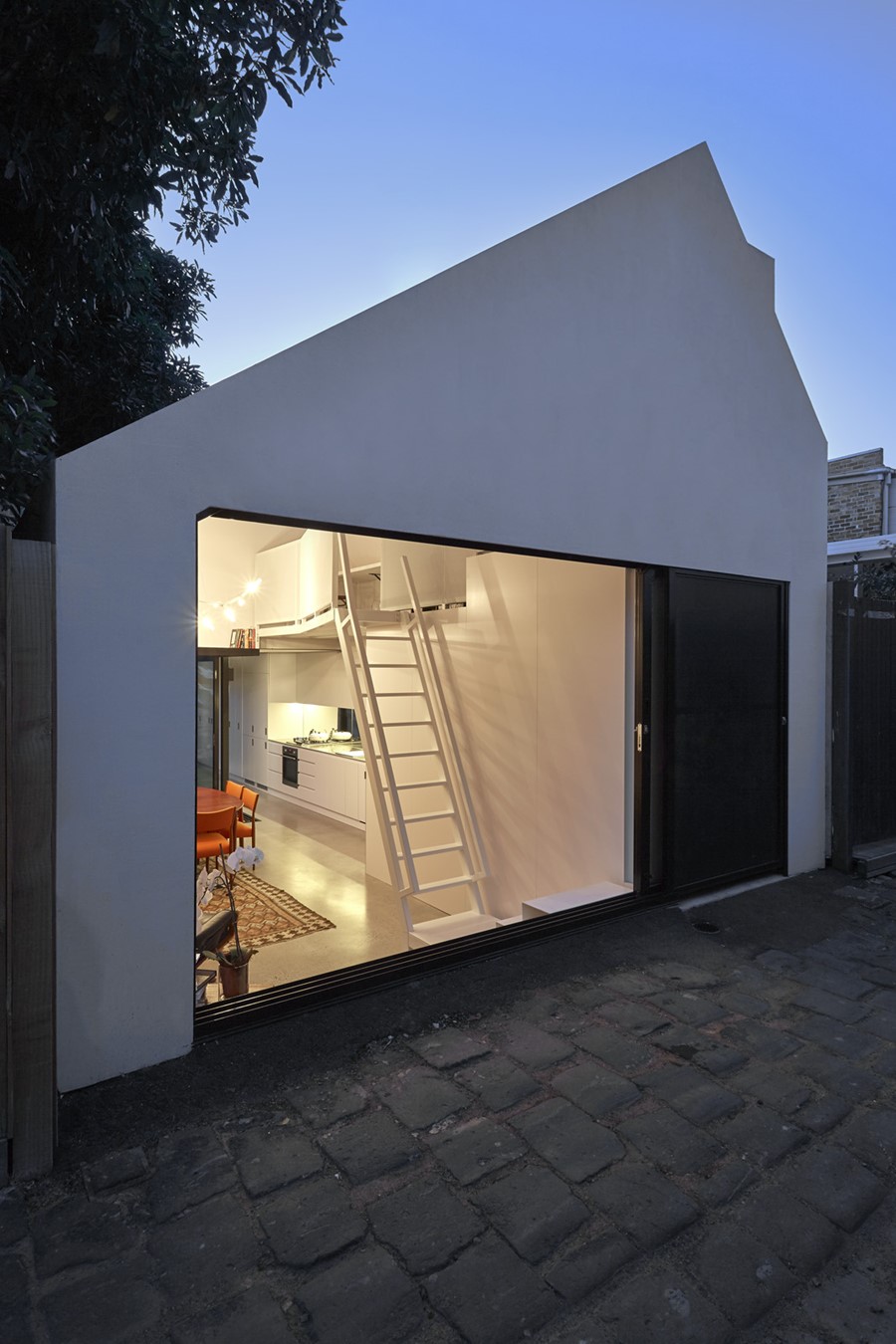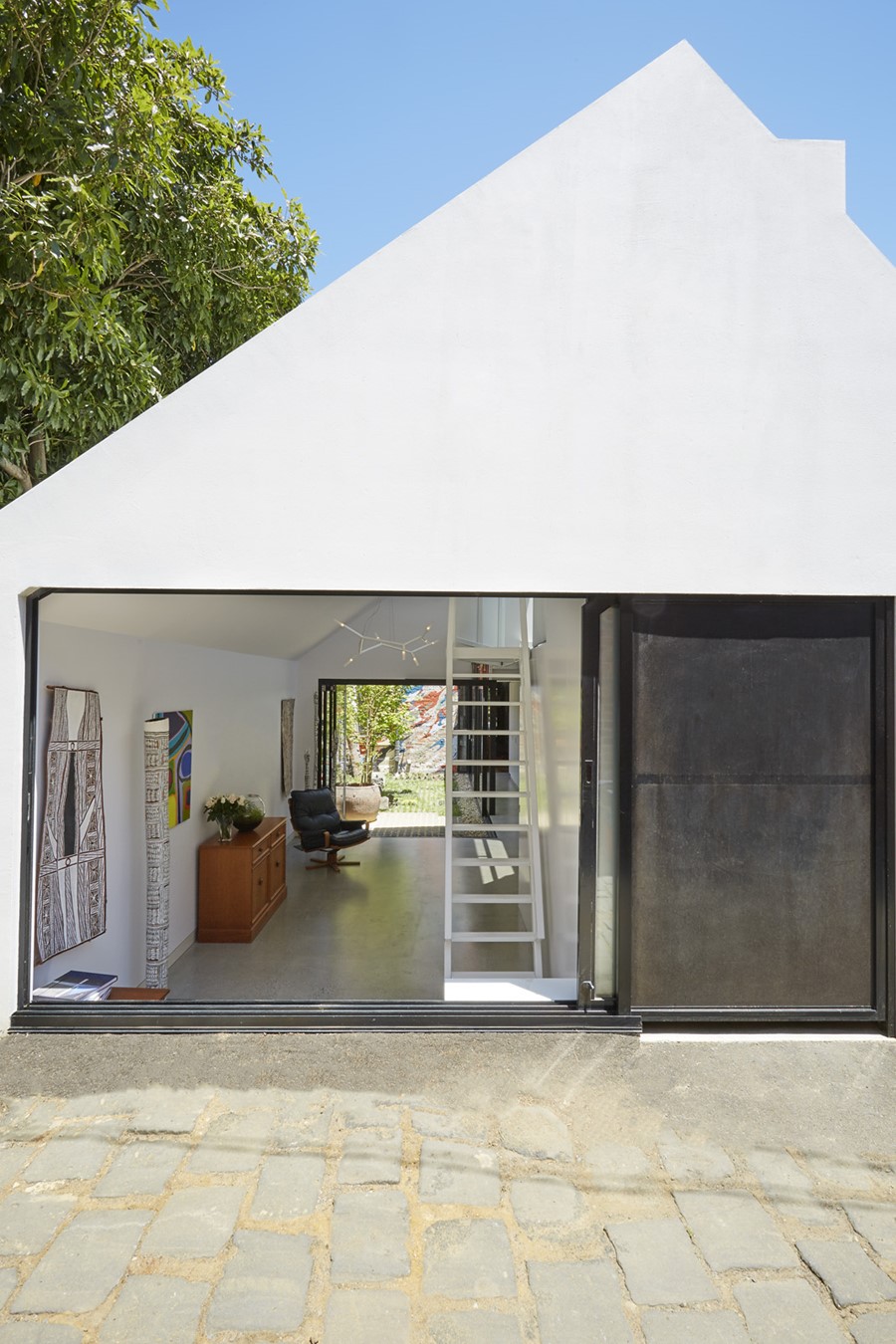Alfred house is a project designed by Austin Maynard Architects in 2015 and covers an area of 142m2. Project Team: Andrew Maynard, Mark Austin.
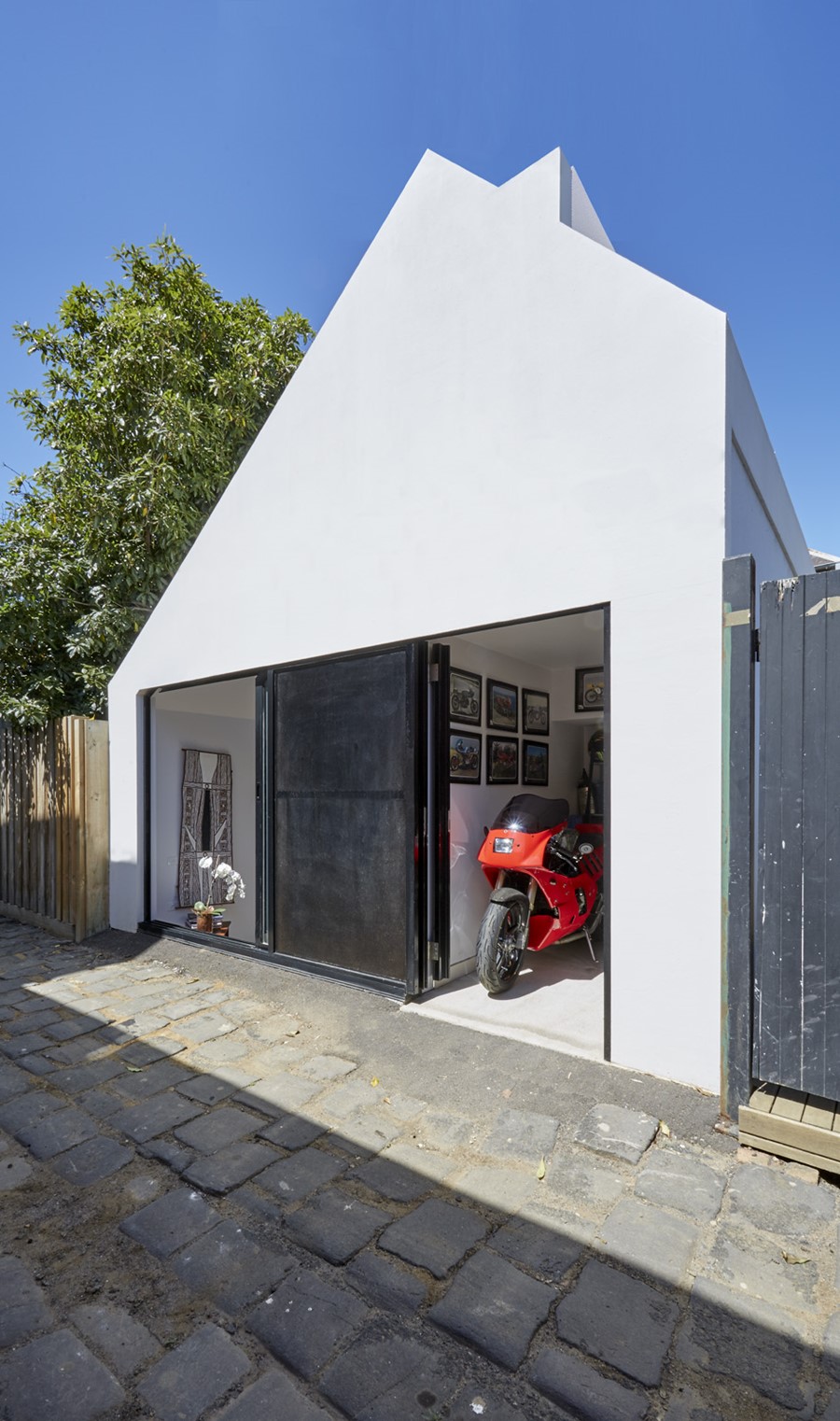
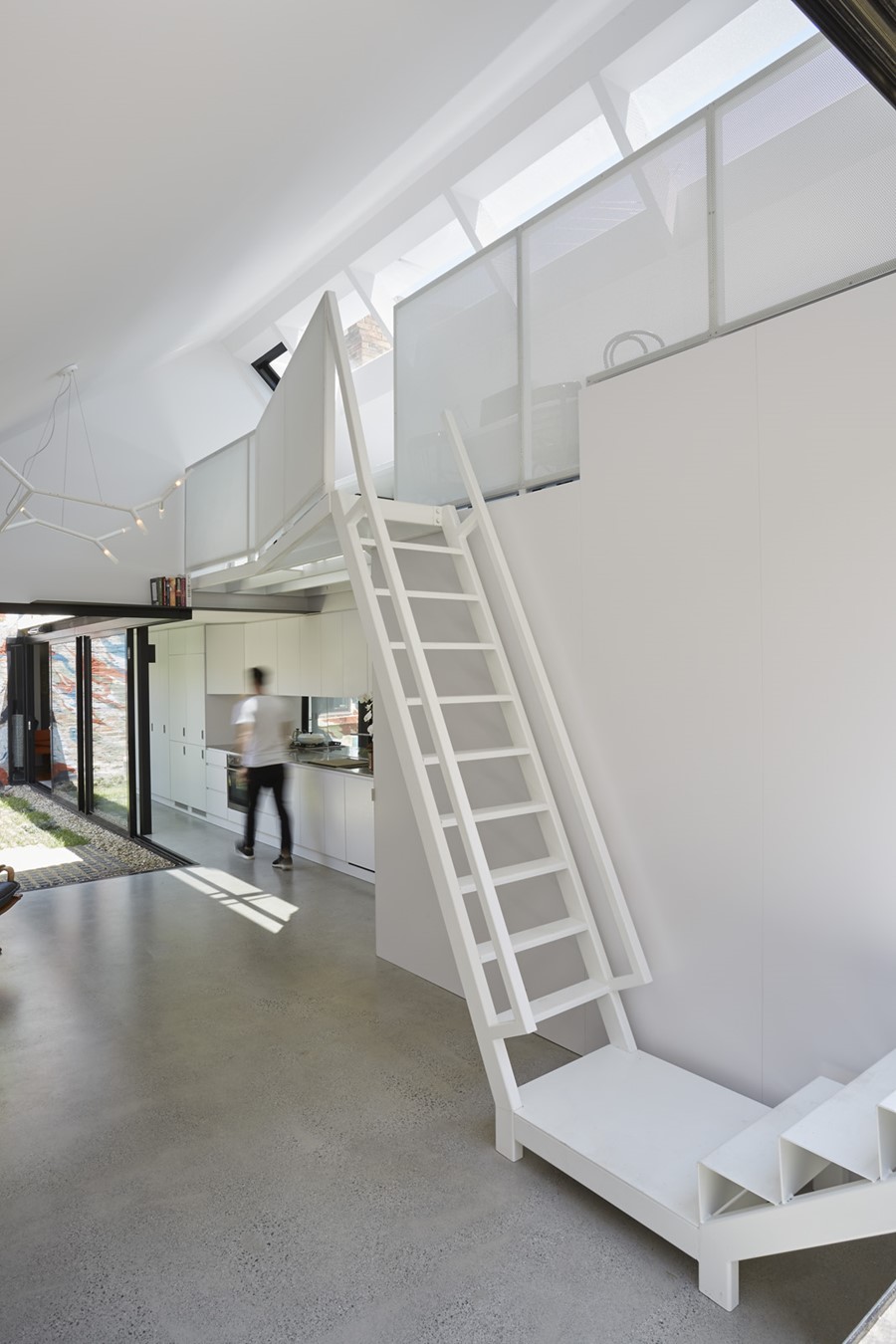
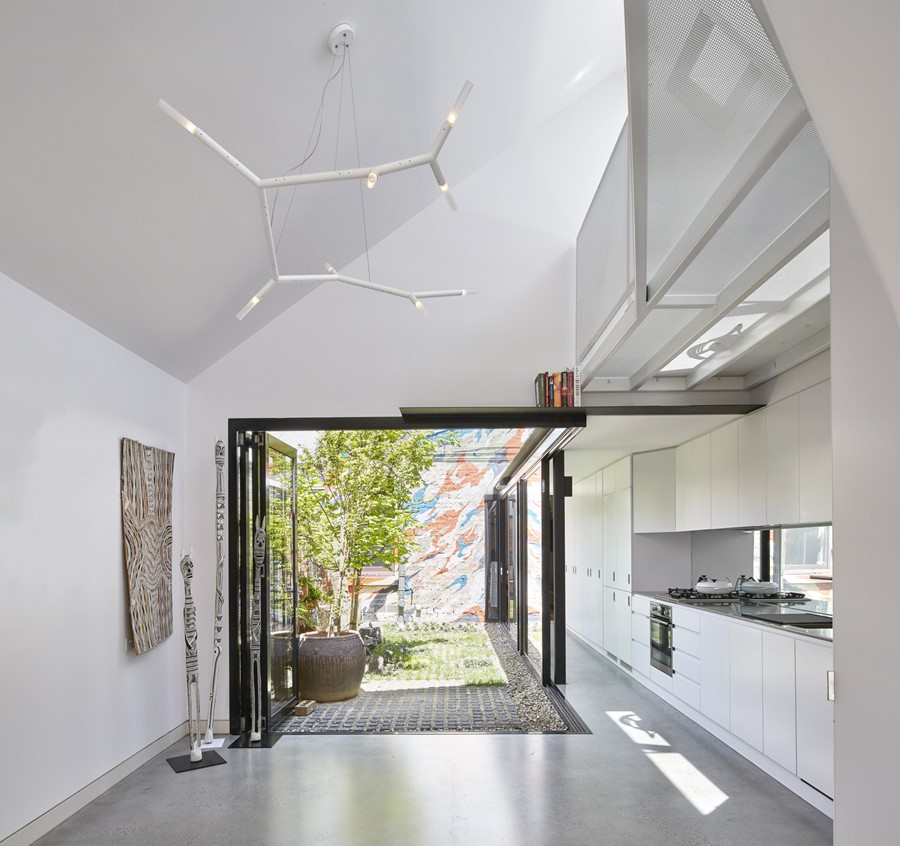
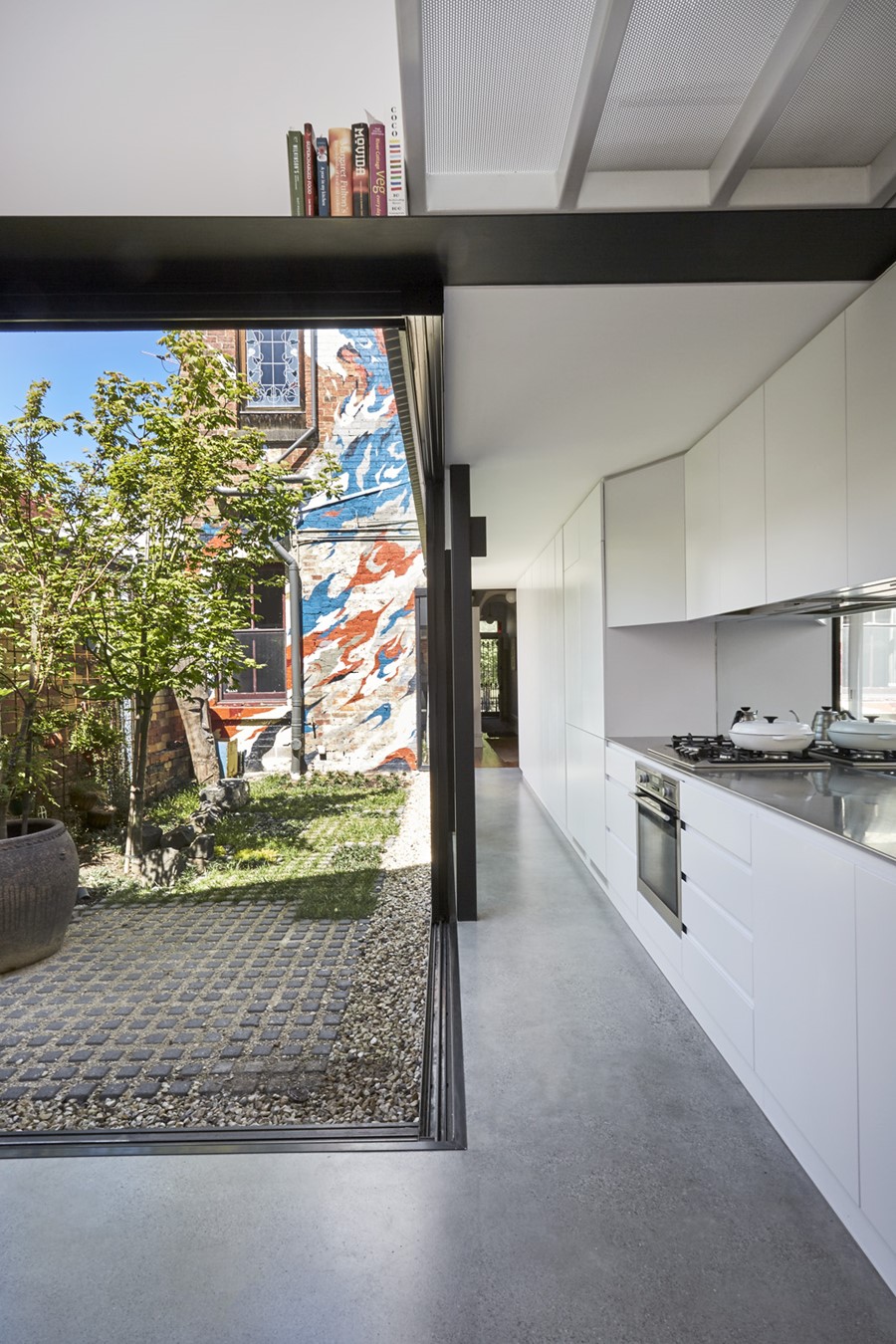
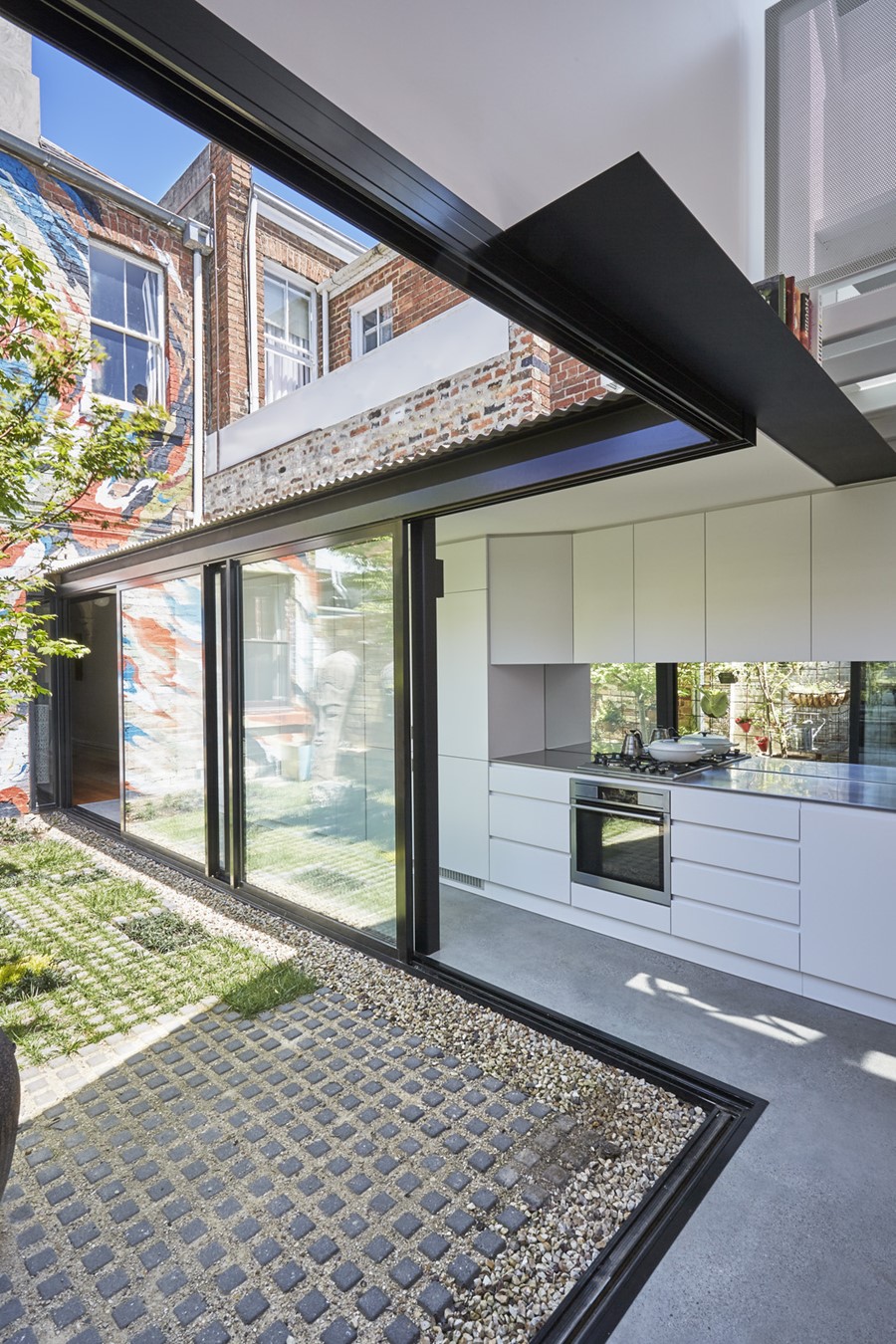
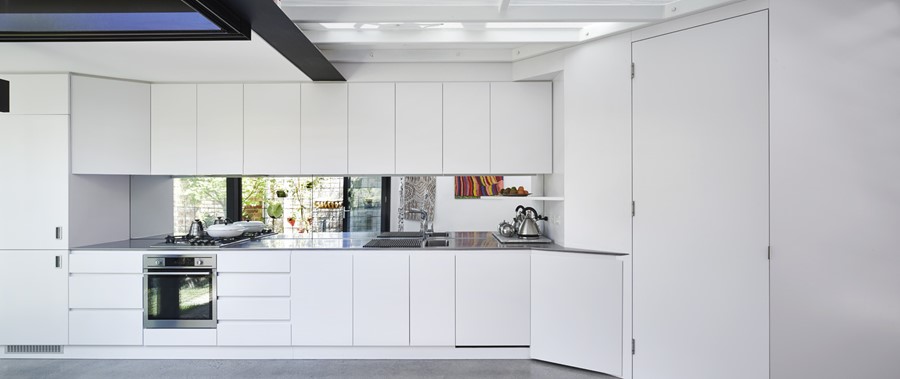
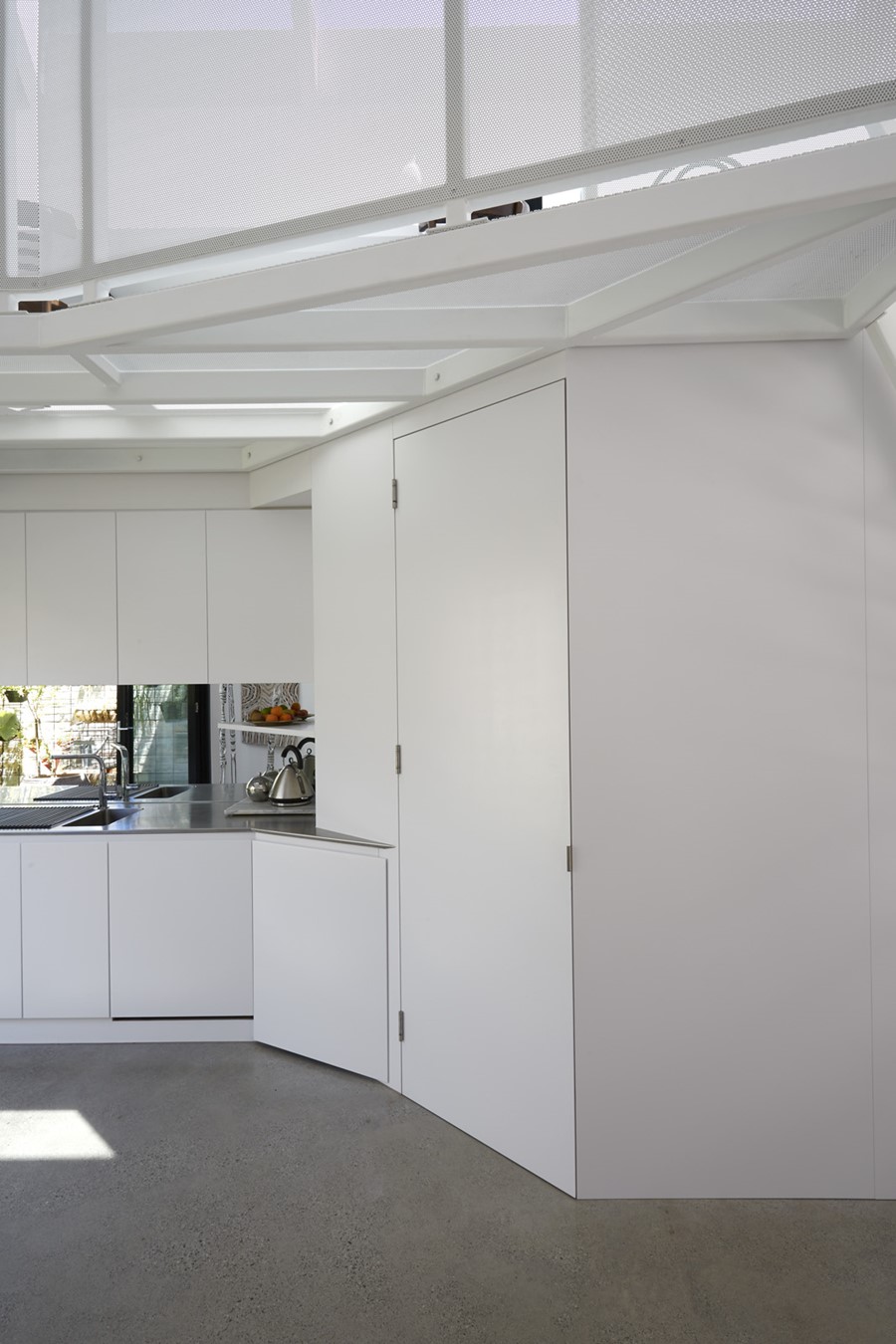
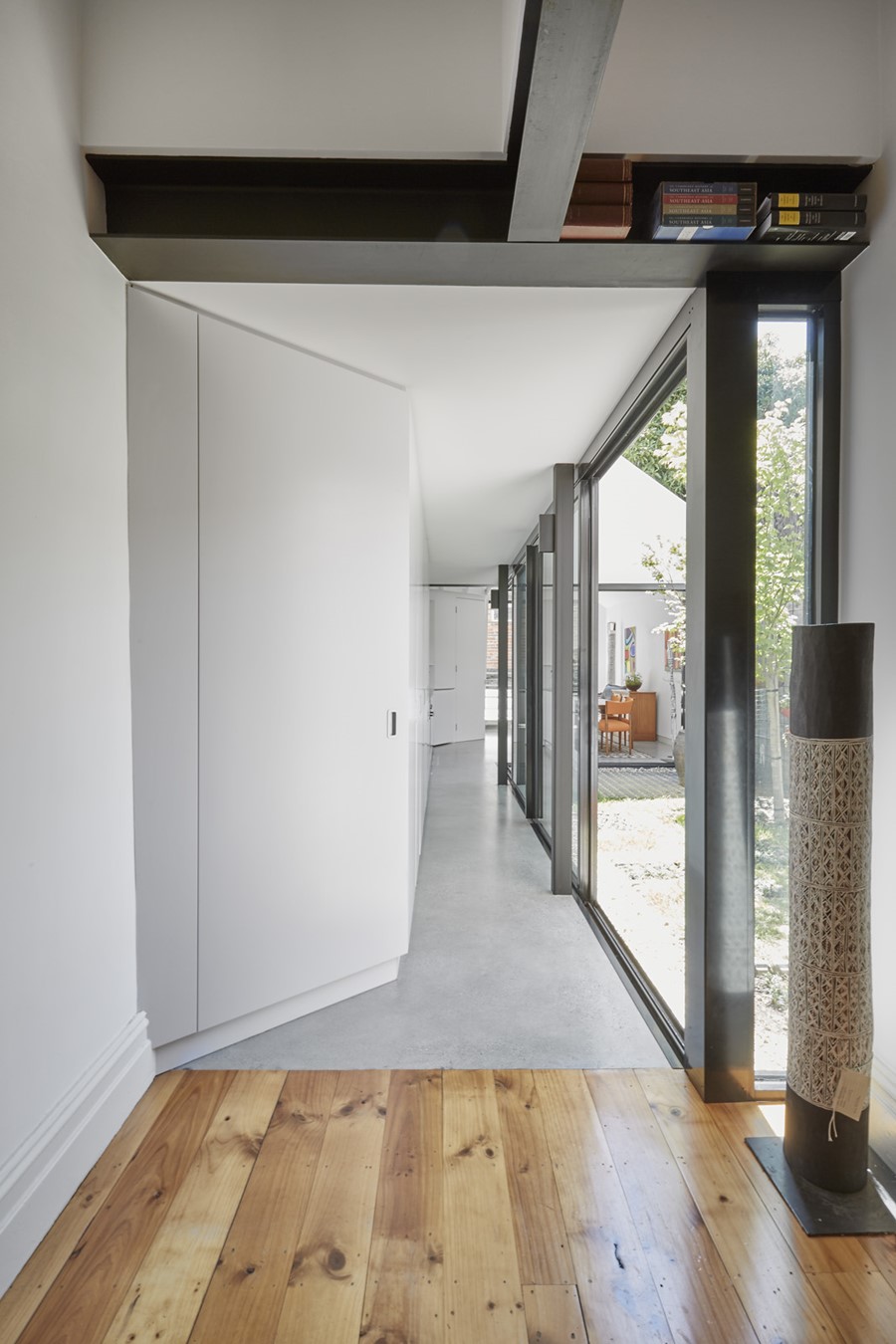
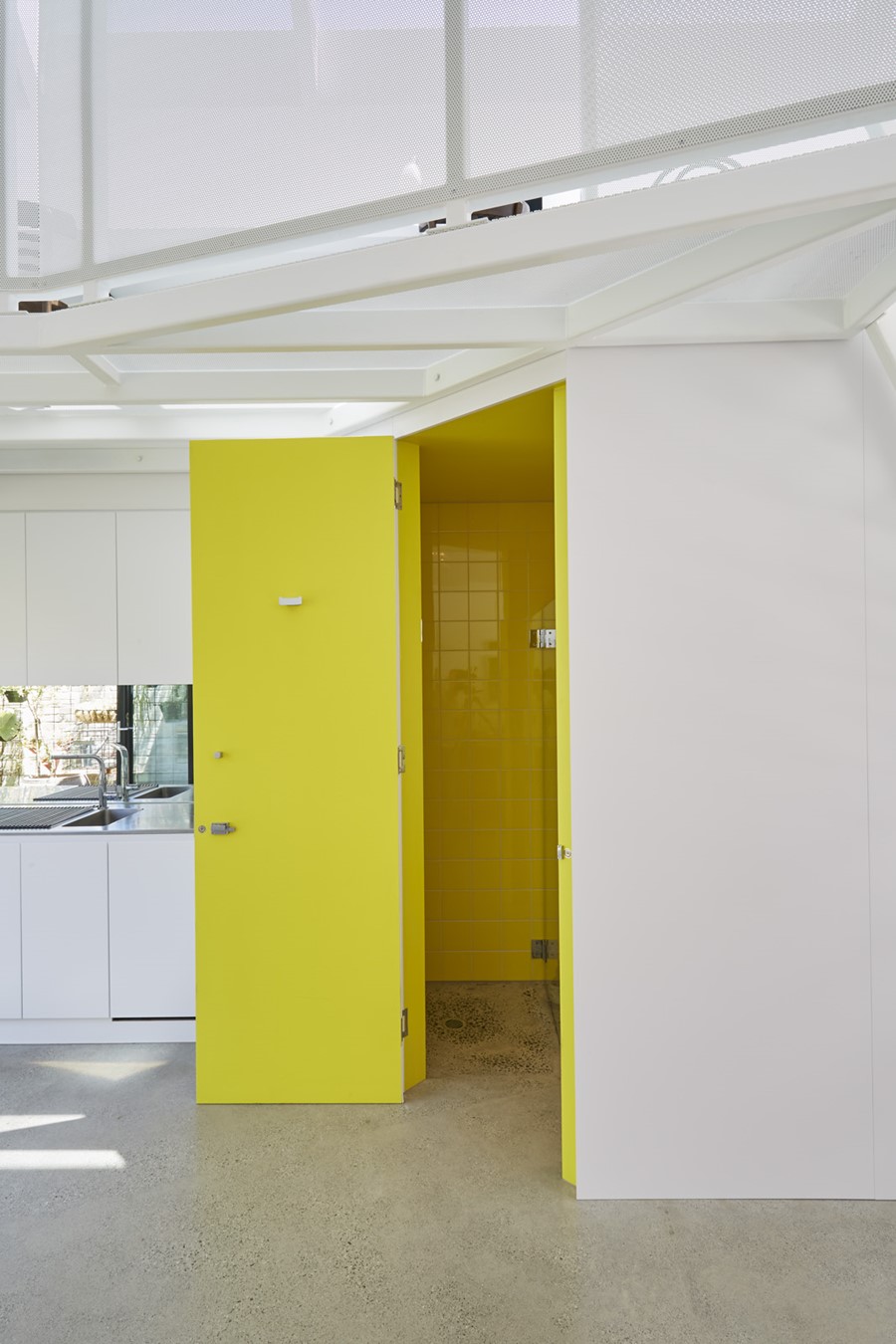
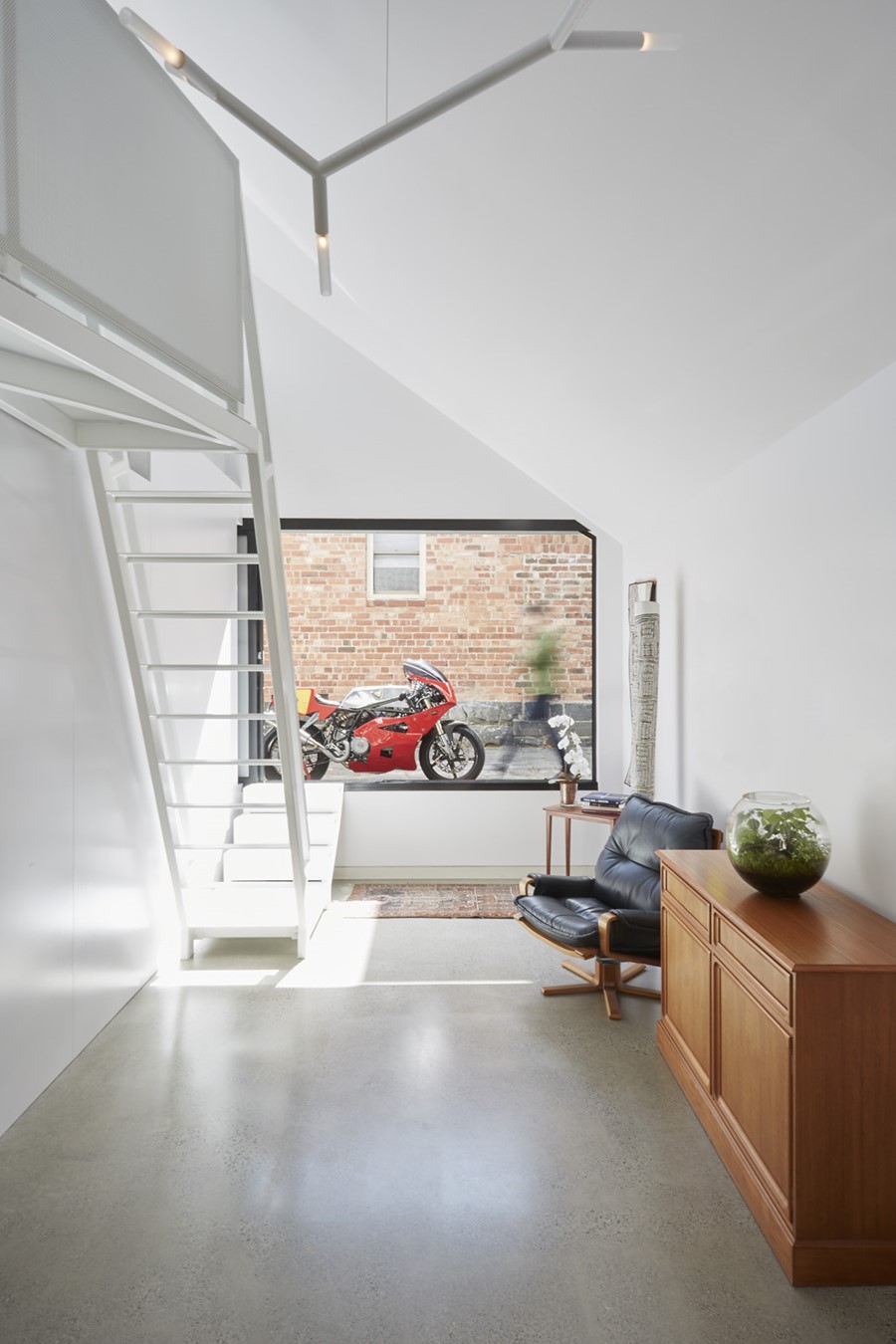
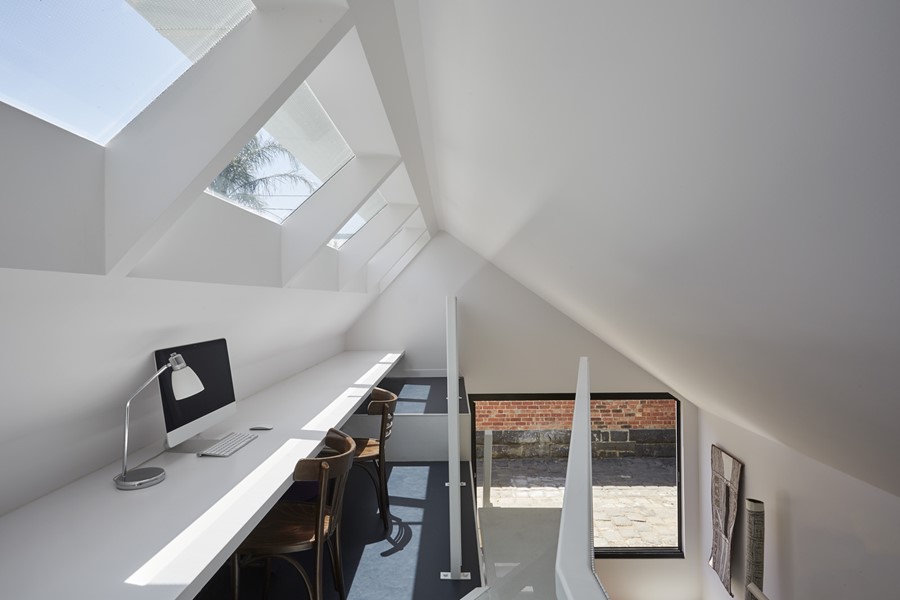
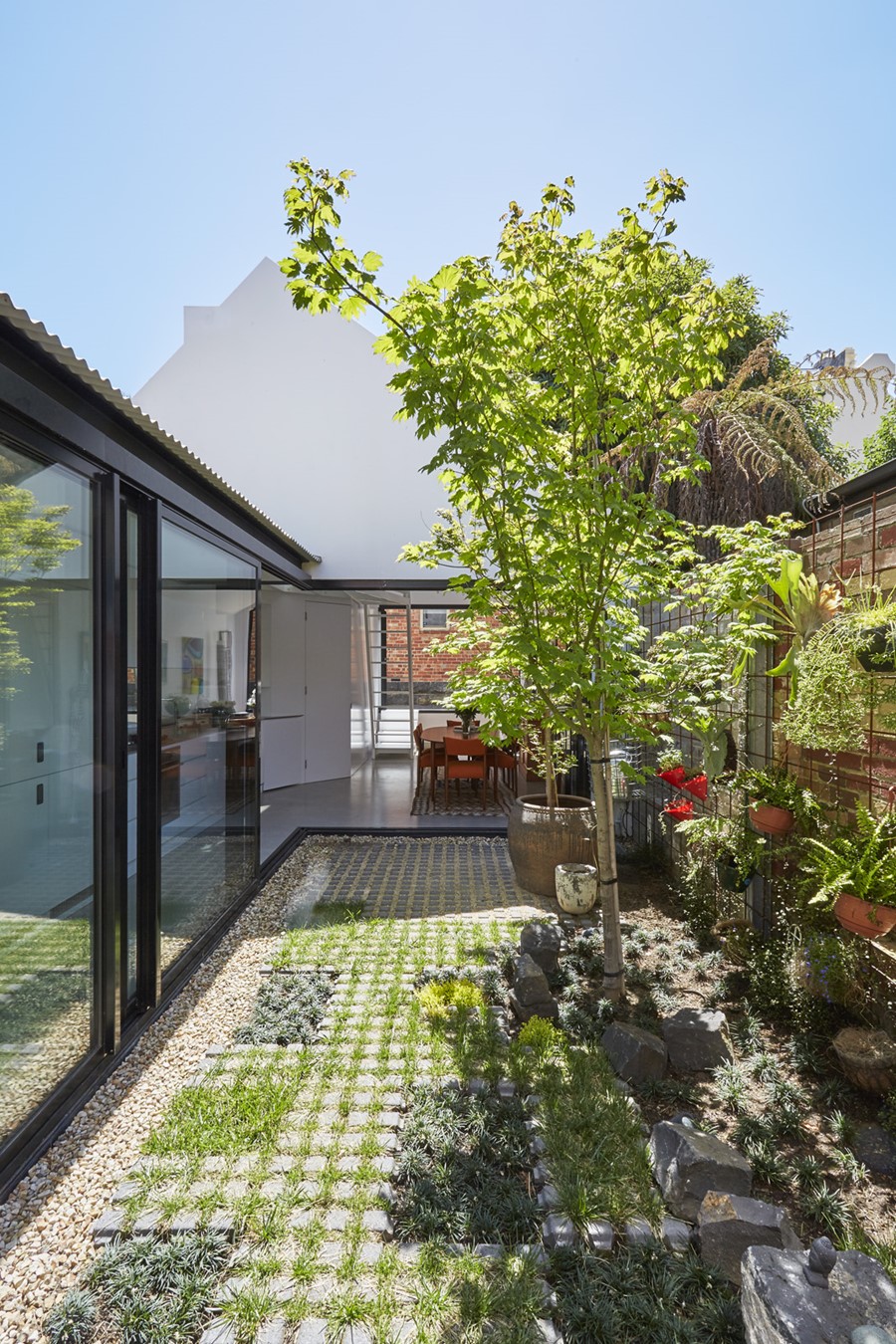
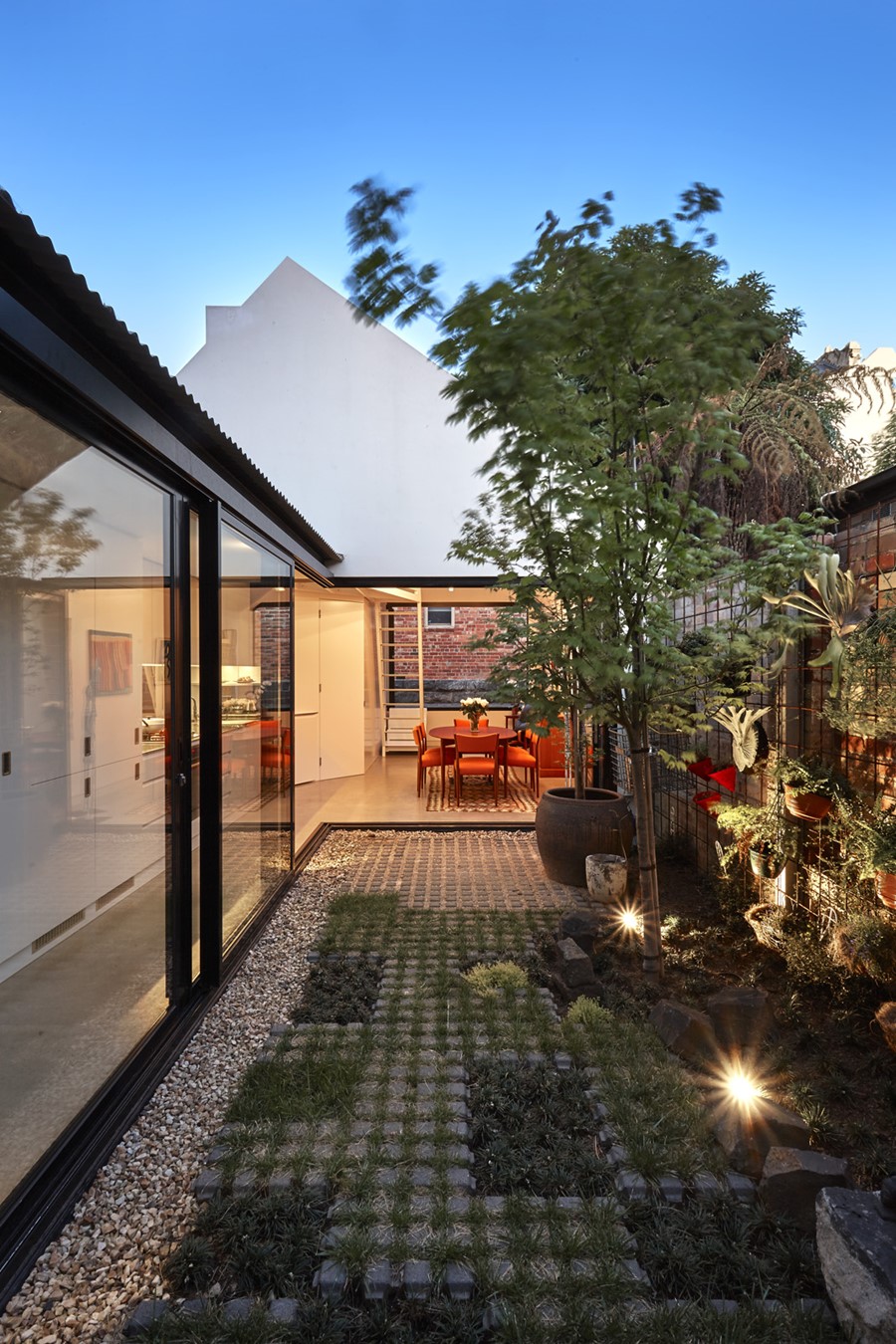
Alfred House is the addition and reconfiguration of an existing two storey, two bedroom terrace, with a tired lean-to that had little relationship with the exterior space. The client wanted us to replicate one of our previous projects, Vader House, as they liked the idea of a centralised courtyard. We were able to push the concept further due to the property’s connection with the laneway.
The lean-to was removed and the space redesigned to include an internal garden, kitchen/laundry, living/dining room, bathroom, (mezzanine) office and store room/garage, for the client’s prized motorbike. Rather than placing the addition directly on the rear of the house, we moved it back to the boundary laneway. In doing so we essentially turned the dodgy little lightwell, that you find in most terrace houses, into an entire garden. With a backyard you have to chose to go outside, whereas here you don’t have to make that decision, the walls easily fold away to activate the space in a more natural way.
Alfred was a real fine tuning exercise, unrelenting on every detail whilst working to a tight and constrained budget. The way the doors in the kitchen come together without the use of a central column, the deceptive mirror splashback, use of perforated steel to filter light, the way the back glass window opens up completely without a fixed panel – it all required the greatest of effort but appears effortless
PHOTOGRAPHER: Fraser Marsden
